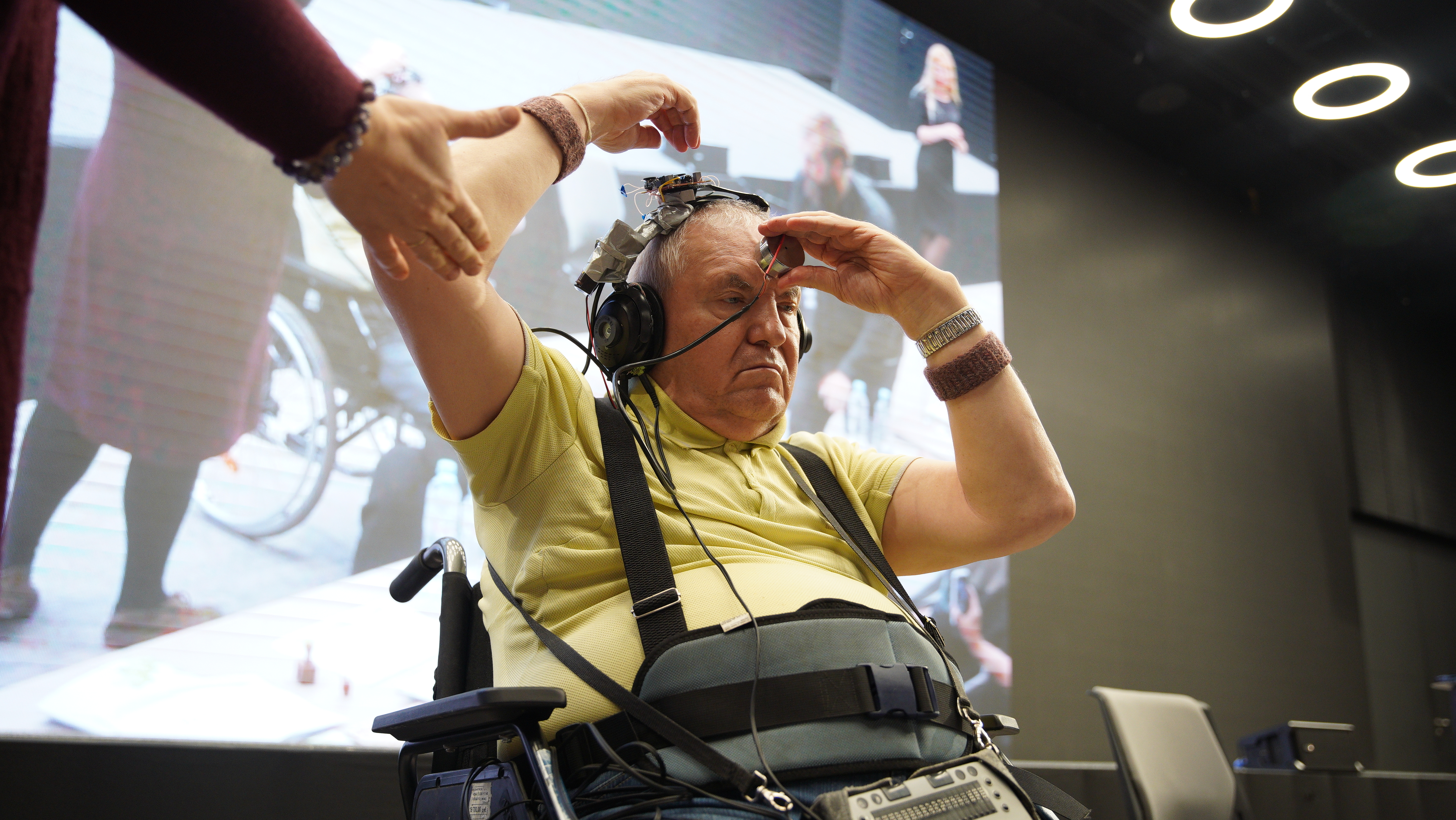
This year's 36-hour developer marathon brought together more than 100 participants - 15 teams from seven regions of Russia: St. Petersburg, Novosibirsk, Penza, Lipetsk, Veliky Novgorod, Samara and Moscow. Dozens of mentors and experts in the field of social business and the rehabilitation industry. Hackathon had never known such a scope.
3D printers started working right after the start and did not stop printing until the very end, creating prototypes of unique products and bold solutions. Each participant was determined resolutely and sincerely worked to win, which maintained a competitive atmosphere of creativity throughout the Hackathon.
All 15 projects deserve special attention, but we will tell only about the most interesting of them. A detailed description of the rest of the developments can be found in our operational publication from the Hackathon.
The idea of the project “Helmet” was first announced in the book of the professor of psychology Alexander Suvorov “Meeting of universes, or Deaf-deaf aliens in the world of hearing impaired”. Now Alexander Suvorov is absolutely deaf and blind, but he was inspired by music all his life and he always dreamed of hearing it.
His dream was realized by students of RTU MIREA from the Department of Computer Design. The team of engineers also included an experienced radio electronics technician and a language interpreter, who organized the communication of the team members with a deaf-blind professor.
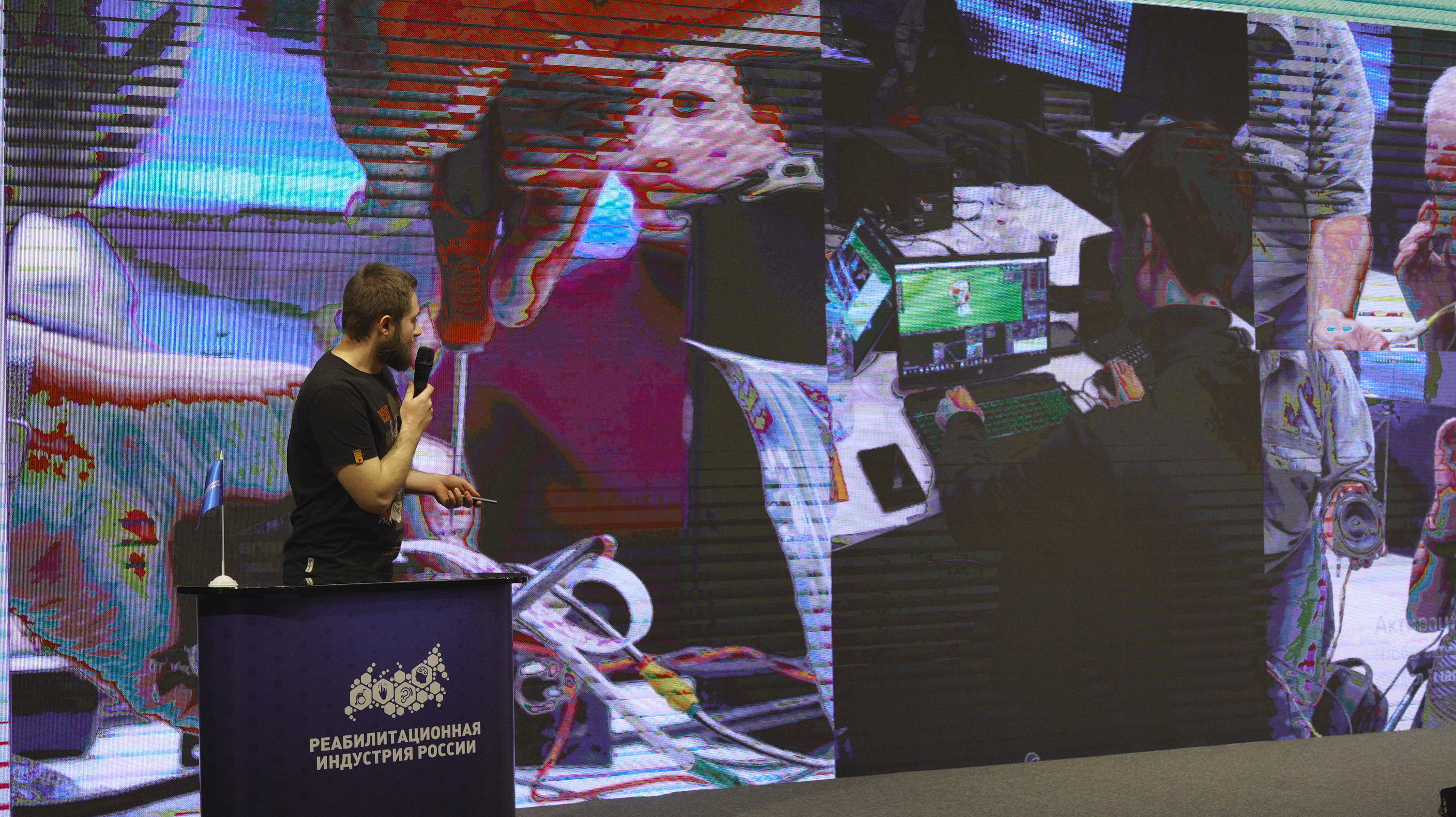
Young developers were inspired by the idea of creating an alternative ability to perceive music. In his book, Suvorov writes about a hearing aid, which could not only amplify the sound, but also at the same time convert it into vibration. The professor suggested placing vibromotors on the forehead or on the cheekbones under the eyes, and at the same time equip each of them, as well as each speaker, with an independent volume control.
A few lines from the book of the deaf-blind professor are the only things that Suvorov's team had at the start of the Hackathon. And after 36 hours in the final of the event, Alexander Vasilyevich admitted that his dream came true.
By the evening of the first day, the concept of the device was fully developed and the layout of the "filling" began. For the second day, the team finalized all the technical aspects and presented to the jury the first prototype of the headset, printed right before the presentation itself.
There was only one vibromotor on the sample and it was located on the forehead, but empirically, the developers found out that it is best to make two vibromotors. Art students drew the design of the future device and announced its wide market opportunities. Such a headset can serve not only as a means of rehabilitation, but also be used by sighted-hearing people who literally want to feel the strength and beauty of sound. Film lovers, gamers and musicians will only lead the list of potential users of such a device.
The presentation was made by Alexander Suvorov himself in a newly-printed, but successfully working headset.
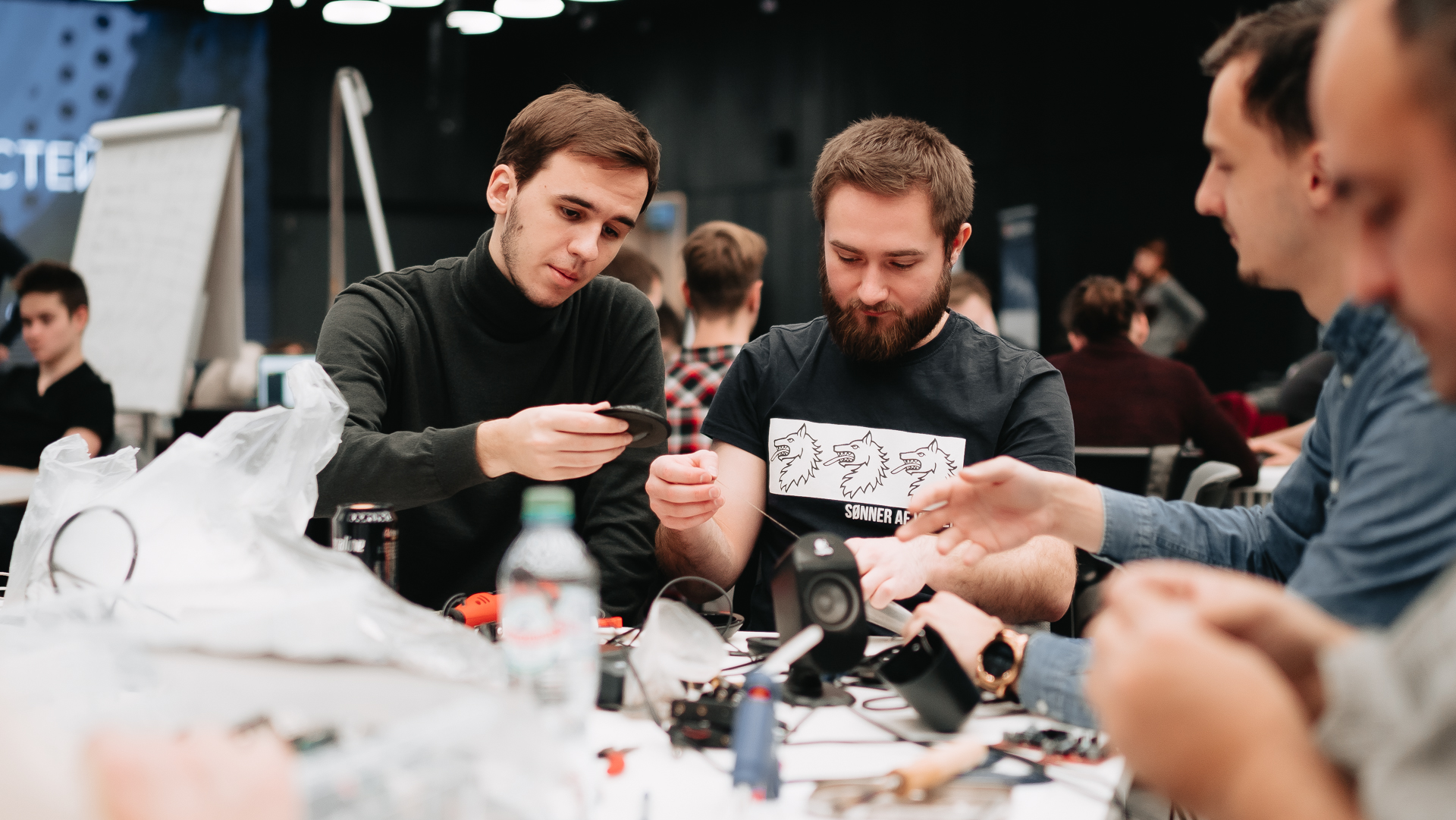
Conceptually, the device is not so much a hearing aid as headphones with a vibration motor. Such a headset will indeed be equally convenient to use for both a deaf and hearing person. The music in the headphones played so hard that it spread throughout the hall, as if from speakers twisted to full volume. But this is exactly what Alexander Suvorov sought. The professor admits that despite the deafness, he can feel the vibration created by the sound, and together with the sensations from the vibration motors, understand the rhythm and motive of the music.
The device, created within the walls of the Hackathon, gave the professor such an opportunity.
Therefore, the project "Helmet" became the winner of the marathon. But not alone.
The year 2019 created an interesting precedent for the organizers and all participants of the Hackathon. The jury team, having deliberated for more than an hour, instead of the planned 30 minutes, made an unusual decision.
The victory was awarded immediately to two teams, dividing the first place between them. The second winner (and perhaps, on the contrary, the first) was the project of the mobile game "Forward for the cow." A team of development students from PenzGTU arrived at the Hackathon with an online game project for children with dyslexia.
“Conceptually,“ Forward behind the cow ”is a regular runner, but in case of loss, before starting again, the player must complete a series of simple tasks - exercises that train attention. For example, to find all the “ns” in the chaos of letters on the screen, ”says project leader Alexei Tyunyaev, a student at the Department of Information Technology and Systems of PenzGTU.

The gameplay is very casual and suitable for any child. The player appears in the image of a cowboy on a horse, who, in pursuit of a cow, is forced to overcome various obstacles and avoid danger. Any mistake leads to the exercise of mindfulness.
During the Hackathon, students developed and implemented 3 more tasks in addition to those that already existed. The jury found the project original, promising and, most importantly, viable. Such a game may well resonate with a wide audience. For these reasons, the team “Forward behind the cow” became the full-fledged winner of the Hackathon, sharing the victory only with the team of “Helmet”.
Both projects received 200,000 rubles each.
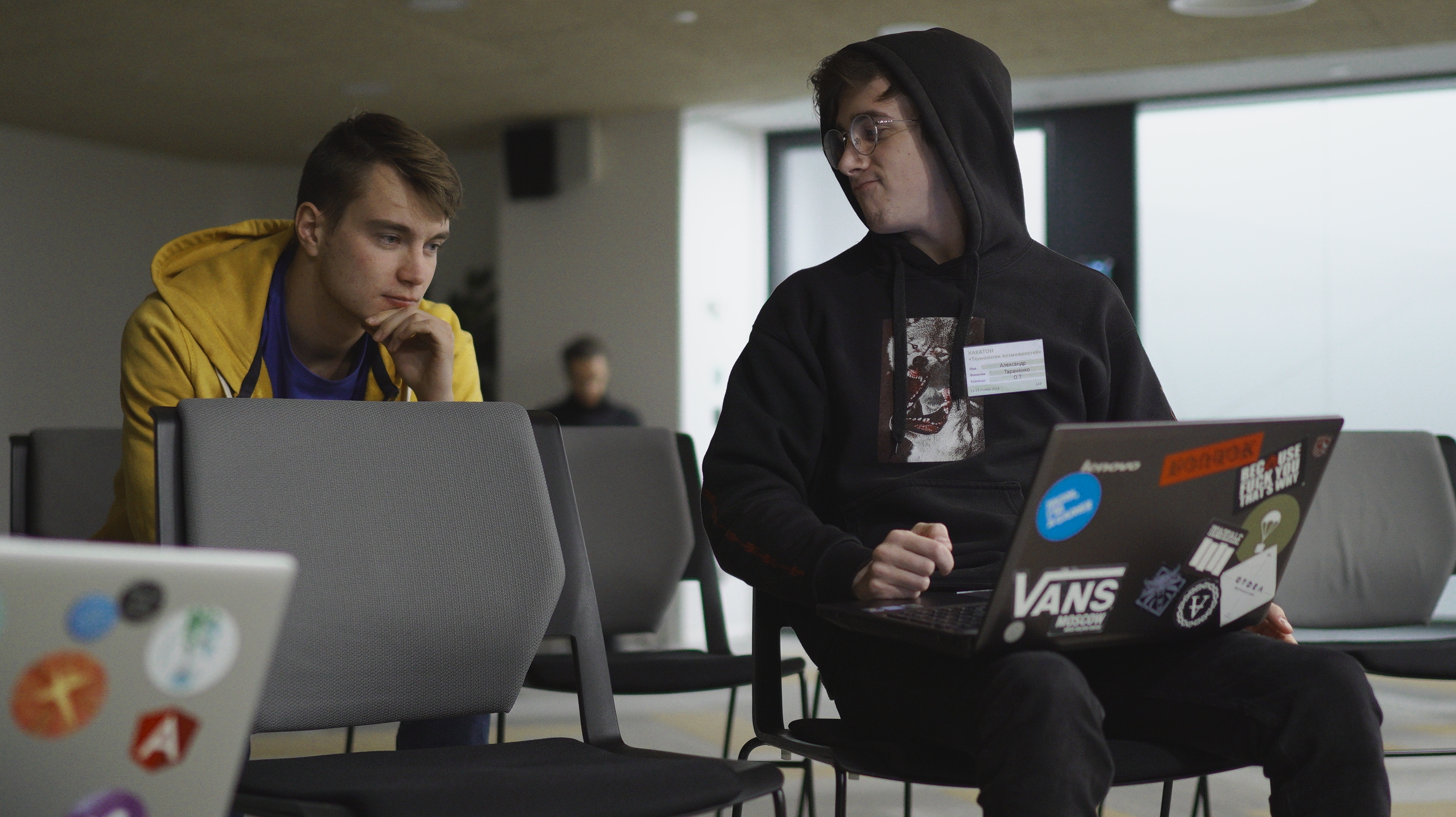
The project, which received 150,000 rubles for second place, deserves special attention. His team consists entirely of RTU MIREA students - winners of the past Hackathon. In 2018, the developers were able to assemble a team of like-minded people and in 36 hours they made a working prototype of the volume sensor at the request of the deaf-blind Deaf Galina Ushakova. You can read more about this achievement and other events of Hackathon 2018 in our report from the event.
Throughout the past year, the team of Pavel Kabanov continued to work on the project and has advanced so much that the current version of the device is already quite suitable for implementation on the market. But this was not enough for the developers.
“At the Hackathon 2019, another step forward was taken. Right now we are assembling a device with a new design suitable for everyday use. It is as compact as possible, convenient and has more functionality. During the marathon, we developed a special headset with a microphone and wrote an application capable of real-time translating the spoken language of the interlocutor into written. Such a device will allow a deaf person to understand who is hearing, without resorting to sign language, ”said the project leader.

In addition to the money from the prize pool, the project also received another award. According to the results of the Hackathon, the team of Pavel Kabanov was invited to Skolkovo to the “TRI Incubator” site, so that the developers could use all the necessary equipment to start production. Now the guys will have their own office, access to 3D printers and many other tools. Everything is absolutely free.
VoiceRig - this is the name of the winning project of last year’s developers marathon. Unlike the first prototype, the current prototype is divided into several convenient wireless modules: a headset with a microphone on the neck and a small vibration motor on the wrist. With each other, they are found only in the docking station, where their batteries are charged - the same and interchangeable for all modules. With the new function of speech translation, VoiceRig now, at the testing stage, will be useful to any person with hearing impairment who wants to use speech to communicate with others.
The projects presented at the Hackathon were distinguished not only by their originality and innovative approach to solving the problems of people with disabilities, but also by the range of solutions presented. The developers marathon was remembered for a large number of diverse ideas that are united by the desire to improve the lives of people with disabilities.
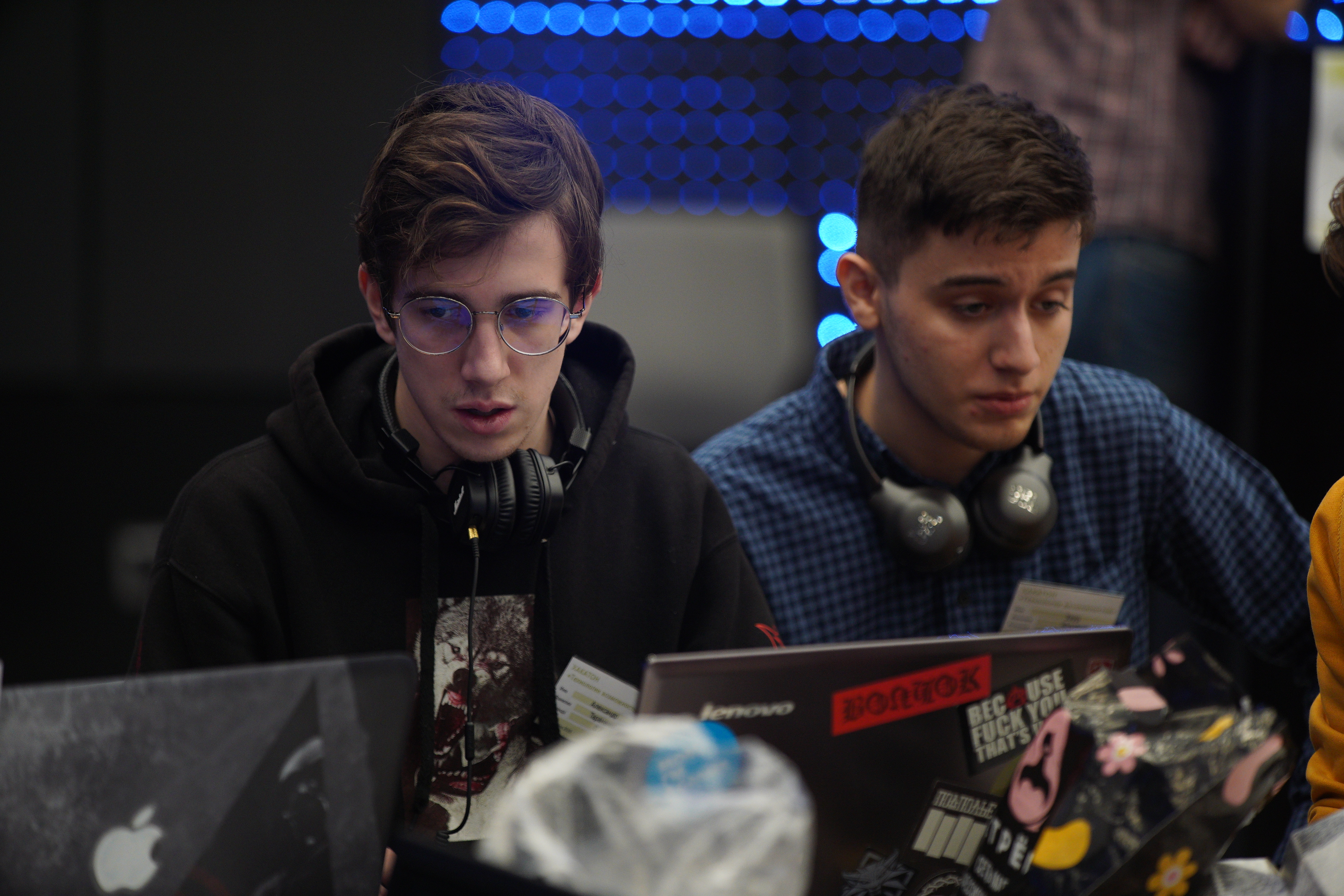
So, the third place and 50,000 rubles deservedly went to the project for teaching children sign language “Alphabet-game (Dactyl)”. Young developers from Lipetsk during the Hackathon realized the idea of a three-dimensional dactyl alphabet, with which you can teach the dactyl alphabet. Conceptually, the project consists of 32 figures depicting hands, frozen in those forms that indicate a particular letter on Dactyl.
“It was at the Hackathon that we printed all our models, creating the first prototype of a three-dimensional alphabet. This is a very convenient tool for teaching children who cannot use hearing - visual three-dimensional products that can be felt, easiest to remember and then reproduced in the imagination, ”said project manager Yuna Nikishkina.
The developers admitted that they plan to create the same alphabet in Braille, because the ability to touch each letter is very important for a blind person. The idea is already overgrown with a concept, and its team from Lipetsk wants to realize its “Technology of Opportunities” accelerator and hackathon in 2020.

For two more projects, the jury, after a long and heated meeting, specially introduced the fourth prize and a prize of 20,000 rubles. A team of educators from Ulyanovsk developed an inclusive abacus (analogue abacus) for working with children. The developers adapted for people with sensory impairments the oldest arithmetic tool that appeared at the dawn of civilization. The mechanical prototype ABACUS kids is equipped with prompting numbers.
“This is the very first prototype we made at the Hackathon. In the next model, we will add backlighting, sound in several languages and a braille font. The device will become electronic and will run on battery power. The design will also be substantially improved, for example, a control panel with three buttons will appear on the right - to turn on the device, sound and switch the language. These solutions will make it possible to adapt the abacus to the maximum for children with disabilities of all nosologies, ”says Elena Paklina, project manager.
In Ulyanovka, Elena heads the Center for Intellectual Development ABACUS kids, where she teaches children, including those with health specialties, mathematics. The project with which her team arrived at the Hackathon is not just a desire for creative self-realization, but the concept of a device that a teacher needs in her professional activities.
Fourth place was shared by ABACUS kids with RHPSN, a project for an affordable, inexpensive foot prosthesis. The team included students from Penza and Korolev, including one foreigner who came to study in Russia from Egypt. The Egyptian quickly became one of the team leaders, and since he had not yet managed to learn Russian well, part of the design work was carried out in English.
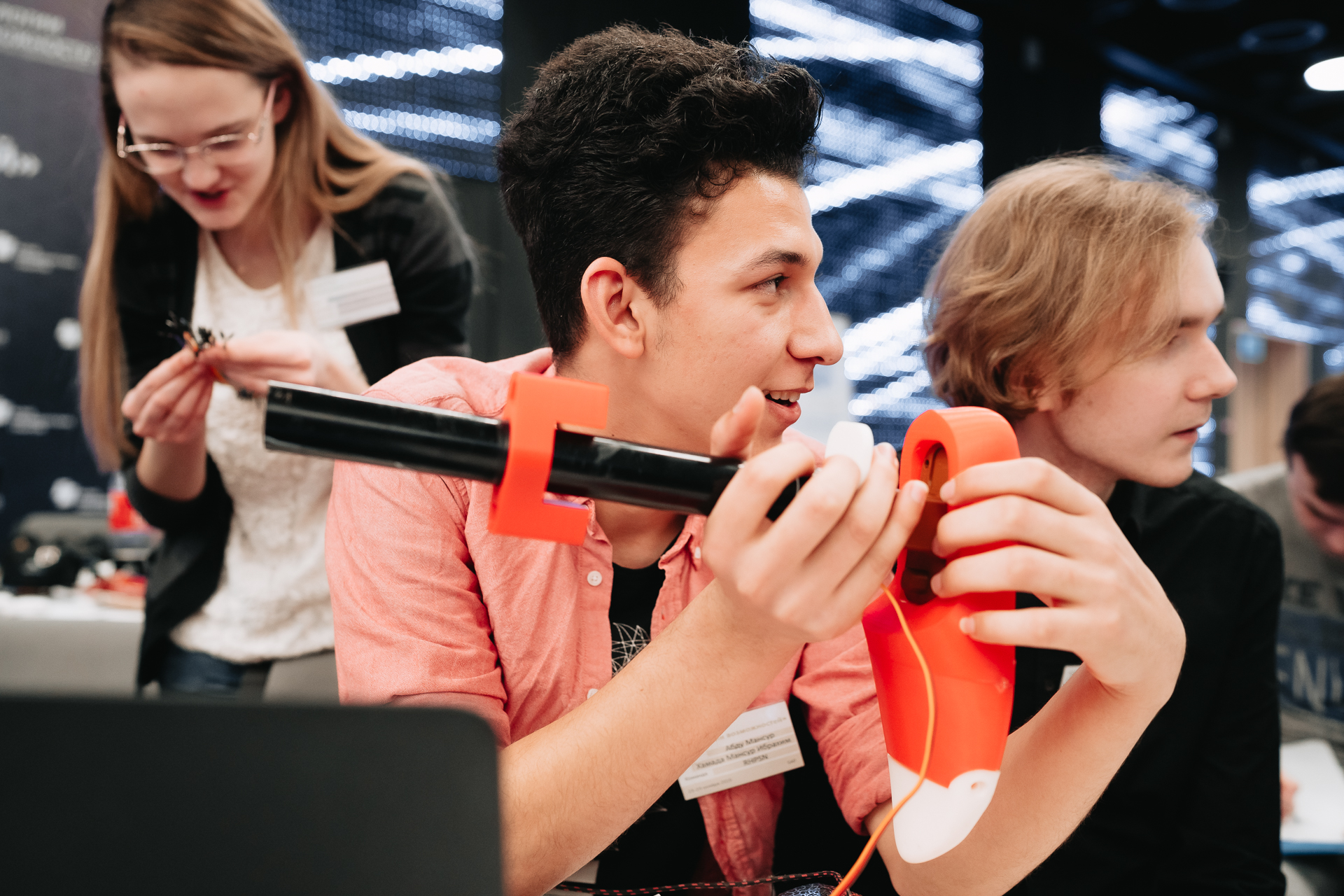
“We are confident that we can make a bionic prosthesis with an external power source, which will be several times cheaper than analogues. Structurally, our product is simple, which will make it easy to repair it on site and continue to operate without handing it over to a service, ”project leader Dmitry Volkov confidently said.
According to the developer, despite the availability and cheapness, the design of the prosthesis provides an individual approach. The device is customized for a specific person, given its physiological characteristics and many related parameters.
36 hours of Hackathon became a giant step forward for the RHPSN project. Within the walls of the marathon the first prototype of the prosthesis was made, a foot was developed, the mechanism of its movements and adaptation to the surface.
“For us, participation in the Hackathon is already a victory. This is an opportunity to “finish off” the project with the participation of more qualified comrades and experts. One of the tasks that we solved during the Hackathon was suggested to us by mentors. In particular, the prosthesis was equipped with servos, making the sock movable, which will significantly increase the owner’s stability during operation, ”said Dmitry Volkov.

In the Hackathon final, Dmitry’s project became interested in the management of OrtoKosmos, the leading manufacturer of prostheses in Russia. The children were promised to make an interesting partnership proposal and support their desire to produce affordable means of rehabilitation for people with amputation.
Among the projects that were not among the winners of the Hackathon, there are also solutions that are relevant to the market and in demand in the industry. Prizes cannot be won by everyone - these are the conditions of the Hackathon, but participation in the event, as a simple student of PenzGTU said, is already a victory. However, the main achievements of all participants in the marathon are their completed projects. This is engineering creativity, unforgettable experience and emotions.
All in one word - Hackathon.
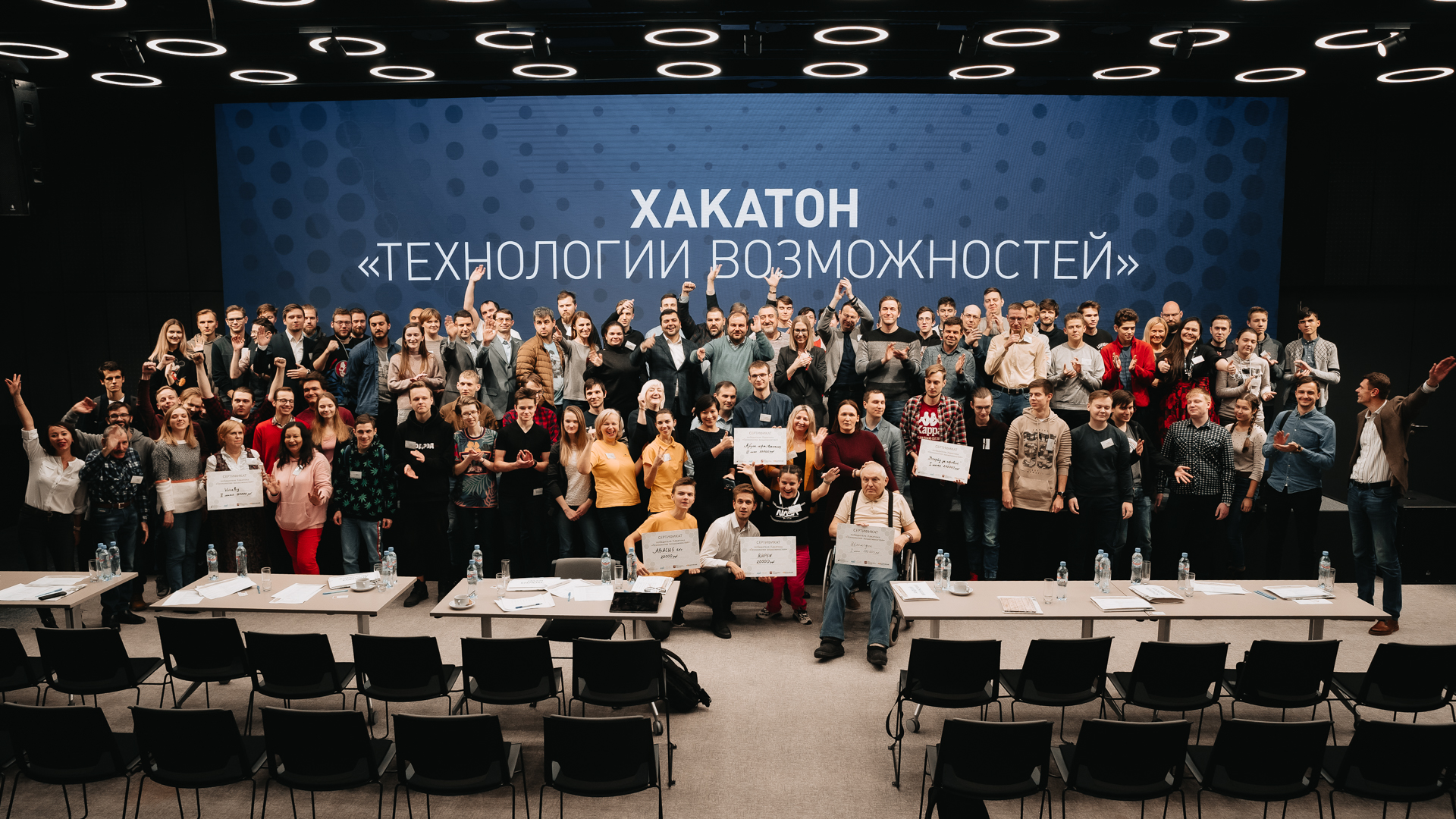
In 2019, the Technology of Opportunity Accelerator and Hackathon are supported by the Presidential Grants Fund.